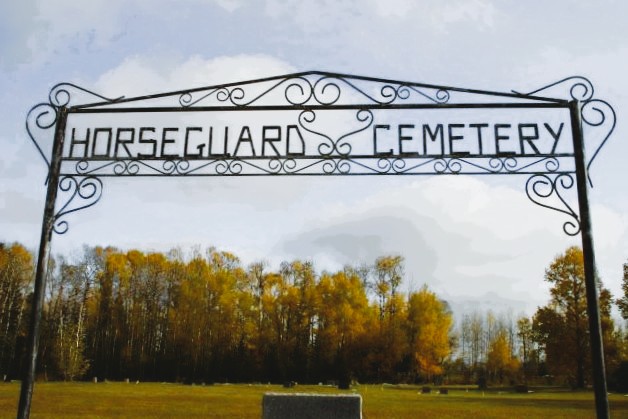Range Road 5-5 S of Highway 11

Nestled in the quiet countryside of Alberta, Canada, Horseguard Cemetery stands as a poignant symbol of the province’s military history and its deep connection to the land and the people who have served it. Located near the town of Innisfail, Horseguard Cemetery is a historical site that commemorates the lives of those who were involved in the military during both the First and Second World Wars. Its history is tied closely to the development of the Canadian military presence in Alberta and the experiences of soldiers from across the country.
Early Beginnings and Military Presence in Alberta
The roots of Horseguard Cemetery can be traced back to the early 1900s, when Alberta was still a young province. The region had already become a strategic location for military training and service, particularly with the expansion of the Canadian Pacific Railway (CPR) and the growing demand for military preparedness in the wake of global conflicts. By the time the First World War broke out in 1914, Alberta had developed a significant military infrastructure, with various military camps and training grounds being established throughout the province.
One such camp was located near what would later become Horseguard Cemetery. The cemetery itself owes its existence to the military presence in the area, where soldiers, especially those involved in training and stationed in Alberta, were frequently assigned duties far from their homes. The site became a resting place for many of these soldiers, both during and after their service. Over time, the land surrounding the cemetery began to gain significance not only for the soldiers who had passed but also for the families and the wider community who continued to visit and honor their memory.
During the First World War, many soldiers from Alberta and beyond passed through the province for training before heading to the front lines in Europe. Some of these men did not return home, falling during battles or succumbing to the harsh conditions of war. Horseguard Cemetery became a final resting place for these men, with soldiers being buried here either during the war or following their deaths after returning from overseas.
The cemetery grew in importance as a place of remembrance for those who had served, particularly those whose families lived far from major military hubs. Over the years, the cemetery became a site of both personal and national reflection, marking the sacrifice of soldiers who had fought for the country’s freedoms.
In the years leading up to and during the Second World War, Alberta again became an important location for military training and operations. Once again, soldiers from across Canada passed through the province, some of whom would end up buried at Horseguard Cemetery. While the scale of casualties was less than during the First World War, the cemetery continued to serve as a solemn final resting place for many soldiers, as well as a place for family members to mourn and remember.
The post-war era saw Horseguard Cemetery evolve into more than just a military burial site. It became a symbol of the broader military history of Alberta and Canada, with efforts made to preserve the site and honor the sacrifices made by those who served. Monuments were erected, and the cemetery became part of various efforts to remember Canada’s military past.
Today, Horseguard Cemetery stands as a historical monument to the service and sacrifices of those who served in the Canadian military. The cemetery remains a site of remembrance, with annual ceremonies held to honor veterans and fallen soldiers. Through its preservation, the cemetery continues to educate visitors about Alberta’s military history and the role that the province played in both world wars. It stands as a testament to the bravery and dedication of those who served, ensuring that their contributions are never forgotten.
Address
Range Road 5-5 S of Highway 11
Nearest Populated Centre: Alhambra,
Province: Alberta
Map Location
Latitude, Longitude
52.30165, -114.69173
Map Location
| Surname | Given Name | Born | Died | Age | Photos | Cemetery | R Code |
|---|---|---|---|---|---|---|---|
The 25 most common surnames found in this cemetery.

The 25 most common given names found in this cemetery.

